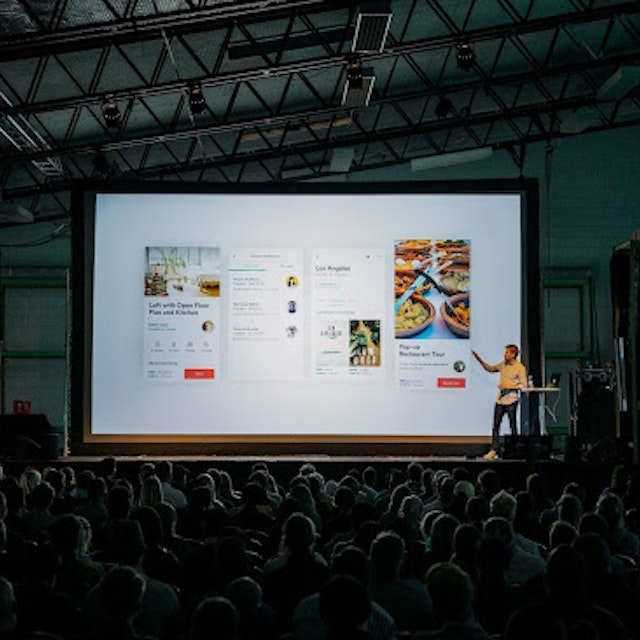From Spreadsheets to Story: How Sales Reps Can Present Data That Closes
Your numbers are strong—but are they telling a story? Here’s how to turn data into deal-winning narratives
Written byKari Faber
Updated onJuly 9, 2025

Introduction
Sales reps live in spreadsheets, but buyers don’t. A killer pitch isn’t just about the numbers—it’s the story behind them. And that story needs to be quick, clear, and convincing.
In this guide, we’ll show you how to turn raw data into high-impact visuals that close more deals. Whether you’re pitching ROI, highlighting social proof, or benchmarking success, we’ll help you go from spreadsheet overload to strategic storytelling.
Key takeaways
Use benchmarks and context to make data meaningful
Visualize ROI in ways that resonate with decision-makers
Highlight social proof with credibility and clarity
Use AI tools like Visual to scale pitch visuals faster
Avoid the most common data presentation mistakes in sales decks
1. Why sales data needs a narrative
Decision-makers don’t buy data—they buy outcomes. That means even the strongest stats won’t land unless they’re framed within a clear, compelling narrative. Raw numbers lack emotion and urgency unless you give them context. There's science to back it up!
Think of it this way: no one gets excited by a .CSV file. But tell them, “Clients like you reduced their costs by 43% in 6 weeks by doing *insert story here*” and suddenly you’ve got their attention.
Context is king. Period. That’s why we recommend thinking of every data point as needing a headline. A stat without context is just a number. A stat with a headline is a story.
2. The four types of data that sell
If you’re not sure where to start, focus on these four types of data that consistently drive decisions:
ROI & value proof
Show before-and-after visuals to highlight impact. Think beyond percentages and tell a story. For example:
Time saved with automation
Cost reductions from consolidating tools
Revenue lift from implementation
Tip: Visualize ROI with bar or bullet charts that emphasize contrast, like what life looked like before vs. after your solution.
Social proof & credibility
Trust is everything. Use real examples from your customer base:
Case study snapshots
Logo walls or usage stats
Testimonial formatted as quote visuals
Tip: A quote visual next to a recognizable logo is more powerful than a block of testimonial text.
Competitive benchmarks
Buyers want to know, “How do we compare?” Show them by:
Highlighting how you stack up in the market
Making benchmarks relatable (not intimidating)
Tip: Frame benchmarks as opportunities. “You’re behind” feels risky, but “here’s what’s possible” feels inspiring!
Momentum metrics
Tell them, “People like you are doing this” with:
A product adoption showcase
Highlights of growing use cases
Funnel shift visuals that show progress
Tip: These metrics work best when paired with a visual trend line and a confident headline.
3. How to visualize sales data the right way

Bar charts for comparisons
Line charts for trends over time
Bullet charts for goal progress
Pie charts (sparingly!) for part of a whole
And some design rules to live by:
Use brand colors consistently
Avoid clutter. Limit it to one key point per slide
Emphasize takeaways with headlines and annotations
DON’T cram five metrics on one slide. |
DO lead with the one number that supports your story. |
4. Telling a story with slides, not stats
Great pitch decks follow a narrative arc:
Problem → Impact → Solution → Evidence
Make sure each metric serves the story you’re telling, and each slide has a purpose. Data should support your narrative, not distract from it.
Your “aha” moment lives in the evidence. That’s where a clearly visualized key metric proves your point and makes your business case undeniable. Pair it with:
A visual summary of results
A customer quote
A product screenshot
Think of each slide as a mini billboard. What’s the one message your audience should walk away with?

5. Use AI to turn CRM data into sales assets
Manual slide creation slows reps down. AI-powered tools like Visual help reps auto-generate visuals based on CRM data like magic. That means less time building decks and more time closing.
Use AI tools to:
Auto-generate win summaries for exec-level presentations
Create upsell decks using usage metrics
Personalize pitch visuals by segment, industry, or persona
To save time department-wide, build a template once and scale storytelling across your whole team.
6. Common mistakes (and what to do instead)
Here are some traps that kill great data stories, and how to fix them:
Mistake | Fix |
Data dump | Turn raw data into headlines + visuals |
No credibility | Always cite sources, show real names/logos |
Slide overload | Stick to one insight per slide |
Generic visuals | Tailor visuals to each buyer’s context |
As much as we may think stories should be extra long and detailed, a strong data story is designed to be skimmed. Make your key points pop, then let the visuals do the heavy lifting.
Conclusion
Great reps don’t just show data. They tell stories with it. Whether you're proving ROI, showcasing social proof, or benchmarking success, the way you visualize your numbers can be the difference between a pass and a purchase.
With the right structure, graphics, and tools like Visual, you can scale storytelling that wins deals.
Spend more time closing with Visual — sign up to be added to the waitlist!